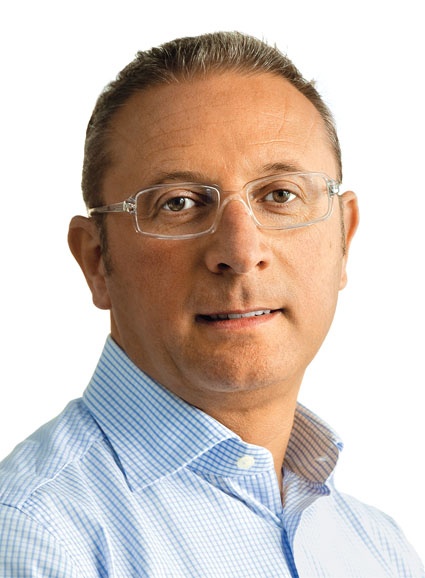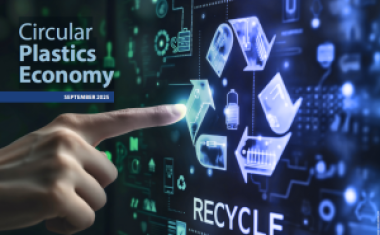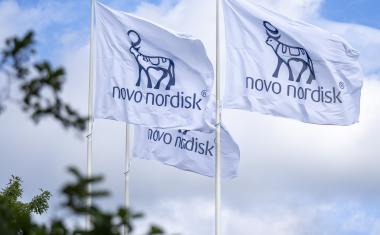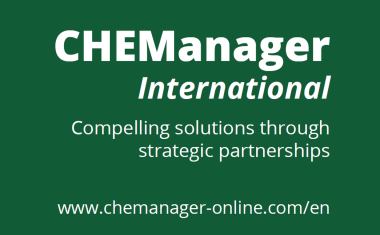Anticipating Needs

Like most companies during the worldwide recession, Air Products saw its business slump. Its Performance Materials unit, which provides products to many industries such as personal care, construction, electronics, and paints and coatings, used the downturn to investigate new ways to deliver high performance products with a lower cost base. Brandi Schuster spoke to the unit's general manager for Europe and MEA Maurizio Garlaschelli about the new awareness in his business, his secret to staying ahead of the competition and why the word "sustainability" is not a new trend for Air Products.
CHEManager Europe: How has Air Products overcome the recession?
M. Garlaschelli: We used the recession as an opportunity to become more efficient. We also pushed forward our efforts to eliminate waste, to drive efficiencies, etc. Like many other companies during this time, we were able to develop a less expensive cost model.
We made it our priority to understand the needs of our customer's customers. We've been focusing on the development of new products - again, the main factors here for us were efficiency and cost effectiveness. We also have been developing products that meet specific requirements.
In a nutshell, we invested more in R&D and in understanding what the market needs. We have been able to develop new products that have helped us balance out the reduction in volume we've seen during the economic downturn. While traditional products slumped, our new products enjoyed quite nice growth. And our investment in our R&D has also helped us to provide things to our customers without them having to ask us for them
For example?
M. Garlaschelli: We have developed new waterborne curing agents in our epoxy additives area, as well as new products based on proprietary amines, which are used in civil engineering and construction applications - this gives our customers the opportunity to formulate cheaper products. We have also developed new paint additives, which helps our customers produce more efficient coatings
Were these new developments primarily driven by your customers telling you what they needed in order to get back on their feet?
M. Garlaschelli: We have a very stable organization with many employees who have been around for several years with a lot of knowledge and experience. With these people, it's possible to understand what the markets want without being asked by our customers. It's easy to understand what the customers want and to position our products correctly.
What are your customers now looking for coming out of the recession?
M. Garlaschelli: Cost performance is a key requirement. They are demanding products that are more efficient and are able to perform at very high levels. Another key requirement is green products - for example, we are developing new waterborne products for different applications.
"Green" is a word that is nearly omnipresent throughout the entire chemical industry. What does Air Products do in terms of sustainability, not only in terms of the products you make, but also in the way you do business?
M. Garlaschelli: Air Products has been working on creating sustainable solutions since the inception of the company. Today our strategy in this area is quite straightforward, it's about identifying where our core technology and products can bring cost-effective solutions to major markets while minimizing impacts of a carbon-constrained energy supply on our operations through continued technology innovation, energy efficiency and diversity of energy sources. To give you an example,
w e are currently building a 12-acre solar farm at our headquarters in Allentown, Pa., which will be capable of generating 1.5 megawatts of energy once it comes onstream in the spring of next year. The solar farm will also help our company reduce our carbon footprint by more than 1,000 tons per year.
Many of our products also play a role in fostering sustainability. Our epoxy curing agents are used in high strength-to-weight composites, which help reduce weight in transportation vehicles and wind turbines. Our catalysts and surfactants are used in the polyurethane foam industry for building insulation.
We're also global leaders in hydrogen production and infrastructure, particularly in the area of hydrogen fuelling. Our goal - which isn't too far away - is to introduce infrastructure alongside hydrogen vehicles with well-to-wheel emissions that are virtually zero, making a green hydrogen world.
We also strive to make our products environmentally friendly as well. We are one of the world leaders in waterborne epoxy curing agents, which are formulated without volatile solvents and use, as the name suggests, only water as a diluent. This means our customers can develop ultra-low or non-VOC paints and varnishes. Some of our surfactants are also biodegradable.
So would you say your R&D is driven by your customers or internally?
M. Garlaschelli: Both. On the one hand, we have the customers' demands, and on the other hand, we are able to understand the needs of our customers' customers. It's important to be able to put all of these factors together when developing new products - and our ability to do this is what in part helps us to stay ahead of the competition.
Would it then be correct to assume that Air Products fared better than others over the course of the turndown?
M. Garlaschelli: 2009 was a tough year for the entire industry. Because our fiscal year 2009 began in October 2008, the first six months were difficult. However, we started to see a lot of recovery in the second half of the fiscal year, which helped balance out the weak first half. While we finished the year below that of 2008, we were still able to emerge from 2009 with a lot of faith for 2010.
How did your portfolio in performance materials fare throughout 2009, considering that many of your products are used in the battered construction industry?
M. Garlaschelli: Because epoxy curing agents are used at the end of construction projects, we didn't see a decline in that part of our business during the first part of the recession, and this helped carry the weight of our additives and specialty additives businesses, which were slumping due to a decrease in demand.
The tide turned in 2010, when the construction industry began to pick up again. Demand for our epoxy curing agents obviously dropped, which was an expected delayed reaction to fewer construction projects being started in 2008 and 2009. This was then compensated by our additives businesses. The imbalance was also mitigated in part by the sales of new products. In 3-4 months we were able to develop many new products based on our customers' need for high-performance products with a lower cost base.
Air Products acquired S.I.Q., a German epoxy additives manufacturer in March 2009, right in the thick of the economic recession. A gutsy move?
M. Garlaschelli: We developed a new strategy back in 2005 that called for the acquisition of an epoxy curing agent producer, based either in Germany or Eastern Europe. And that is one of the strong points of our Performance Materials business. We are not just able to put together a new strategy, but we are also able to follow through on it.
S.I.Q. fit our requirements perfectly in terms of size, positioning and products. It was not acquired just for the sake of buying something, but rather because it was a perfect fit for Air Products.
Where else in the world is Air Products looking to grow?
M. Garlaschelli: We are a global business by scope and nature. We are present in Europe, the U.S. and Asia and are moving into the emerging markets in Russia, the Middle East, Eastern Europe and China. We see the most potential for growth in places such as Russia, the Middle East and in India.
What is your strategy for moving forward in emerging markets?
M. Garlaschelli: We use a multi-faceted approach. For one, we build new plants in these regions of interest: Last year, for example, we opened a specialty amines plant in Nanjing, China, in order to support customers in the growing polyurethane additives and epoxy markets in China, but also to export those products into Europe.
We also utilize acquisitions, such as our 2007 acquisition of BOC Poland from Linde, which gave us a leadership position in the region.
A main concern of Western companies who enter the Asian market is how to protect intellectual property. What approach does Air Products take?
M. Garlaschelli: For us, it is very important to hire locally, to have a lot of people on the ground who speak the language of the country they're in and who understand the culture. We have an internal code of conduct that our employees sign, and while we acknowledge that there is always a risk of IP being exploited, we believe we have the right people working in our company, and we have to trust them. Trust is a two-way street.
















